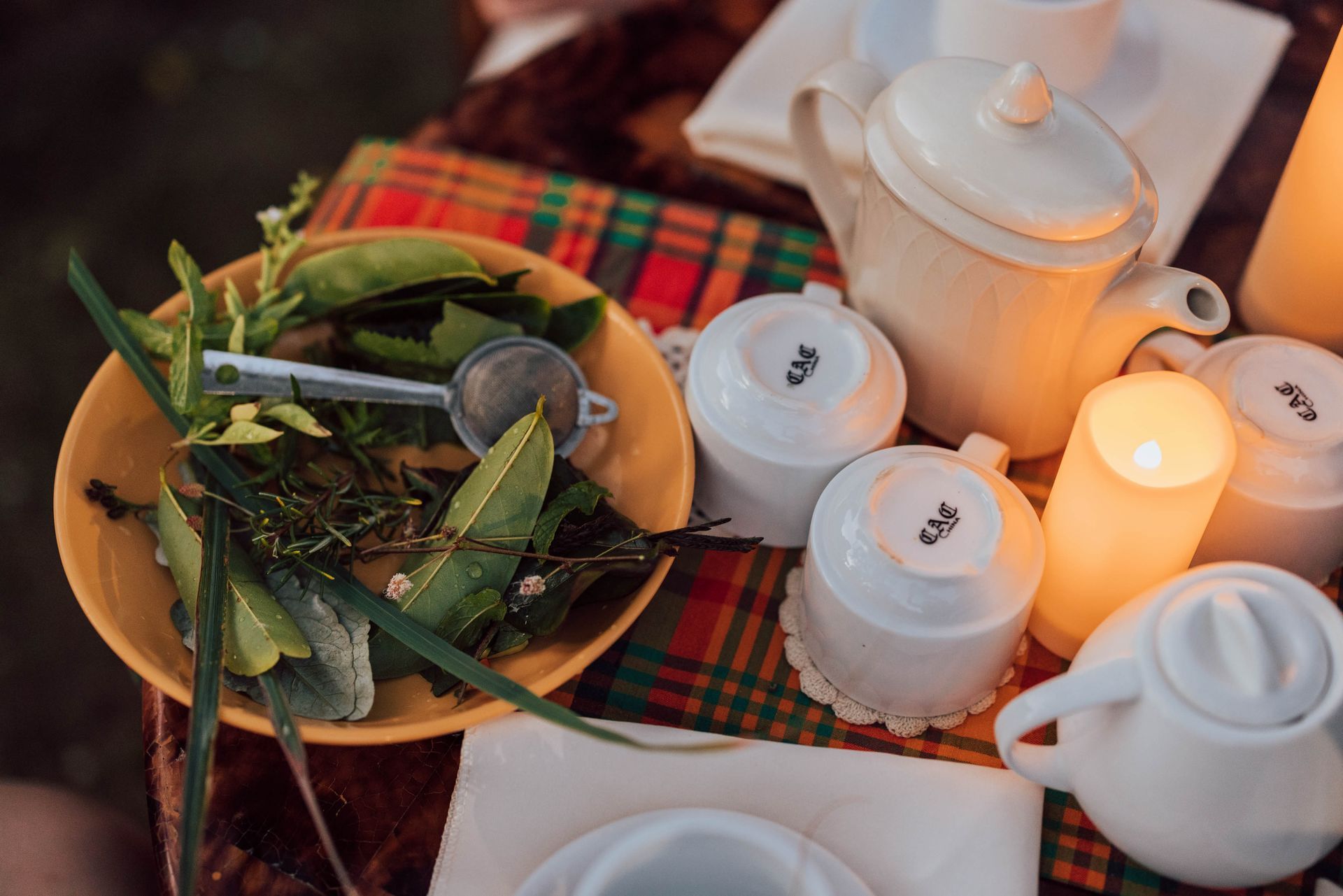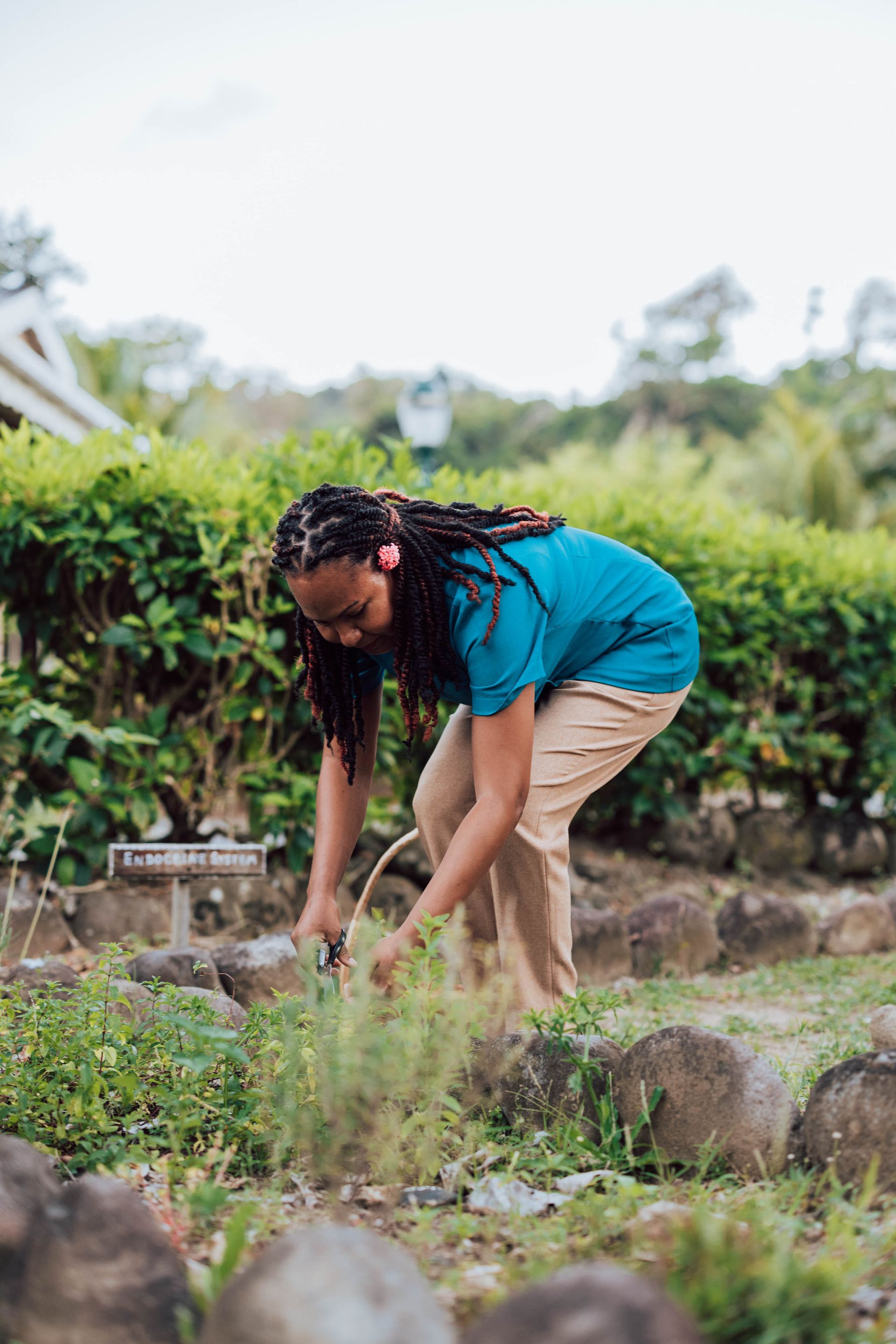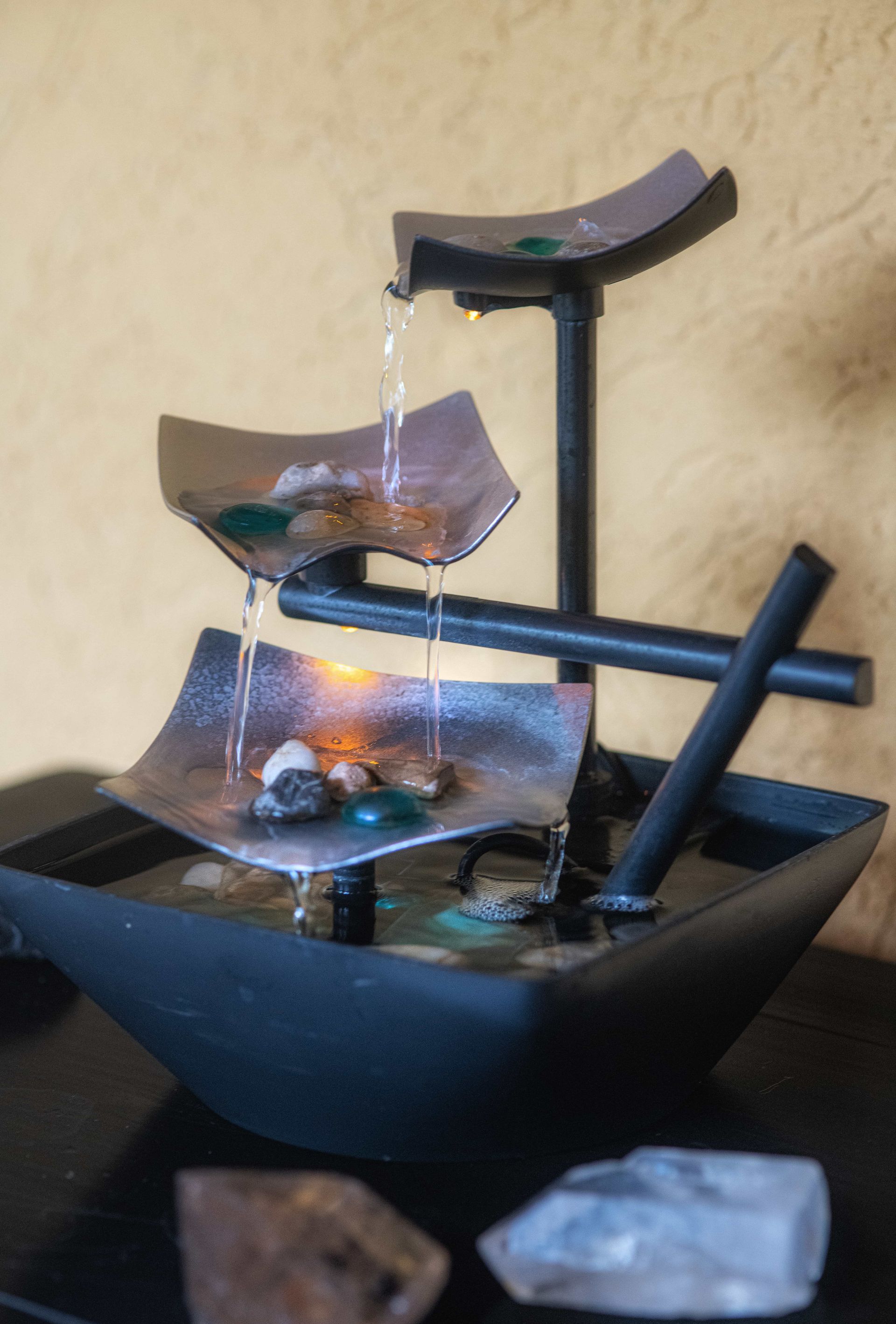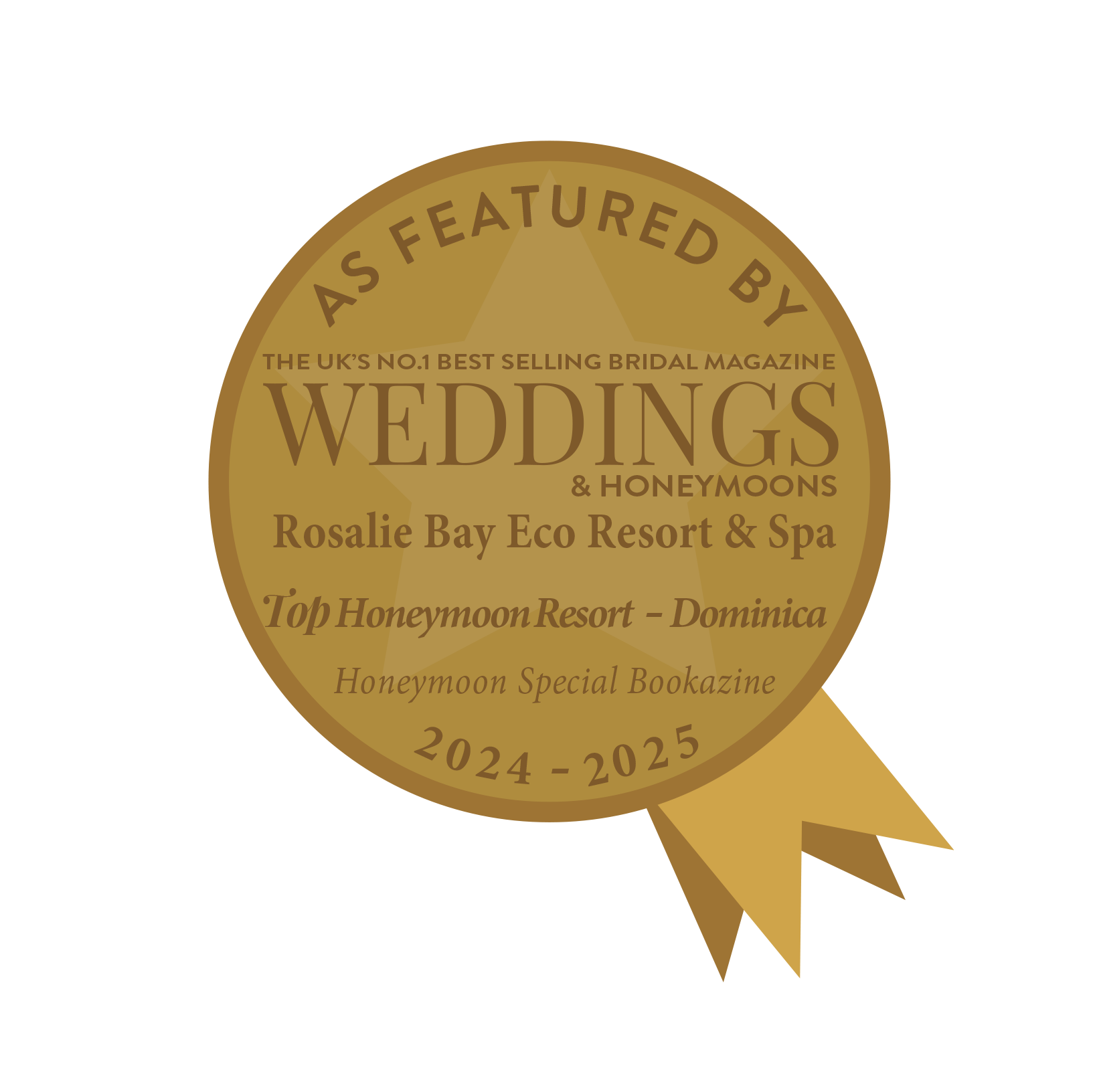HERBAL REMEDIES & HOW TO USE FOR MAXIMUM IMPACT
The Art of Herbal Rotation in Caribbean Healing Traditions

In Caribbean healing traditions—especially in places like Dominica where herbal medicine is a living practice—plants are not simply chosen for their medicinal properties in isolation. Instead, they are rotated, layered, and prepared in ways that reflect the body’s changing needs, the rhythm of the seasons, and the deep observation skills passed down through generations of healers.
This approach is not rigid. It is adaptive—a living algorithm that works in harmony with nature’s cycles and the individual’s unique state of health. Practitioners adjust herbal use based on shifts in temperature, energy, digestion, emotional balance, and even lunar phases. The goal is not just to treat symptoms, but to maintain dynamic balance and prevent stagnation.
Below is a guide to how traditional Caribbean healers might “switch” between cleansing, building, cooling, warming, stimulating, and grounding therapies as part of this holistic cycle.
1. From Cleansing to Building
Cleansing—also known as purging or detoxifying—is often the first step in rebalancing the body. This phase is used after illness, periods of heavy eating, emotional heaviness, or at the change of seasons.
Cleansing herbs: Zeb-a-pique, cerasee (Momordica charantia), sour orange leaf, neem, cascara.
Typical preparation: Bitter teas, bush baths, or purgatives taken in the morning on an empty stomach.
Once the body is cleared of excess heat, waste, or toxins, the focus shifts to building—restoring strength, nourishing tissues, and supporting vital functions.
Building herbs: Moringa, soursop leaf, nettle, vervine, coconut water, or tonics with egg yolk, molasses, or bush rum blends.
Purpose: Strengthen blood, support the nervous system, aid digestion.
Typical form: Nourishing teas, restorative tonics, infused oils.
Rotation timing: 3–7 days of cleansing followed by 1–2 weeks of building.
2. From Cooling to Warming
Cooling herbs are used to reduce inflammation, soothe the digestive tract, calm nerves, and ease fever or irritability.
Cooling herbs: Guava leaf, cucumber bush, sweet basil, soursop leaf, lemongrass.
Indications: Hot skin, headaches, irritability, “hot blood,” rashes, hot flashes.
Warming herbs stimulate circulation, aid digestion, and break up stagnation. They are especially valuable in damp or cool conditions or for sluggish energy.
Warming herbs: Ginger, cinnamon leaf, clove, nutmeg, black pepper, bay leaf.
Indications: Cold hands/feet, low libido, menstrual delays, muscle aches, fatigue.
Rotation strategy: Cooling herbs are favored in hot months or during inflammatory phases; warming herbs are emphasized in cooler seasons or after recovery from illness.
3. From Stimulating to Grounding
Stimulating herbs awaken the senses, energize the mind, and promote alertness. They are often used in the morning to “activate” the system.
Stimulating herbs: Rosemary, peppermint, lemongrass, cacao, cinnamon bark.
Best used in: Morning teas, invigorating baths, or tonics before work.
Grounding herbs calm the mind, aid in sleep, and encourage emotional steadiness. These are evening allies or remedies for high-stress periods.
Grounding herbs: Chamomile, passionflower, cacao husk, vetiver, lavender, patchouli leaf.
Best used in: Nighttime teas, sleep balms, meditation steams.
Rotation approach: Stimulating herbs in the morning, grounding herbs in the evening; heavier reliance on grounding during periods of stress or overstimulation.
Holistic Rotation Practices
Traditional herbalists often:
- Use one group of herbs for 3–7 days before rotating.
- Pair herbs for balance (e.g., warming with cooling, bitter with sweet).
- Schedule “neutral” days with only plain water, coconut water, or mild infusions.
- Observe the body’s signals—tongue color, skin texture, urine clarity, energy, mood, and even dreams.
- Align herbal cycles with lunar phases: cleansing during the waning moon, building during the waxing moon.
A Sample Weekly Herbal Rhythm
- Mon–Wed: Cleansing tea (e.g., zeb-a-pique or cerasee)
- Thu–Fri: Building tonic (e.g., moringa with molasses)
- Sat: Warming bath with bay leaf and cinnamon
- Sun: Grounding tea before bed (e.g., soursop leaf with chamomile)
Conclusion
The Caribbean herbal rotation method is as much an art as it is a science. It thrives on the healer’s ability to listen—to the land, to the seasons, and to the body’s shifting needs. The plants work not in isolation, but in harmony, creating patterns of care that are as dynamic and alive as the island ecosystems they come from.








